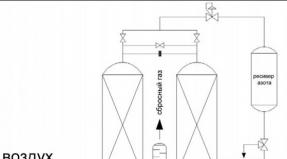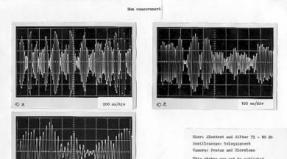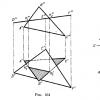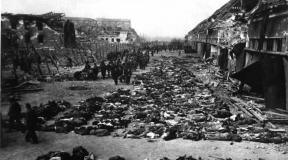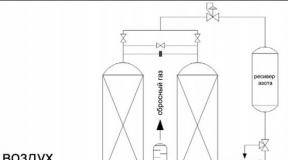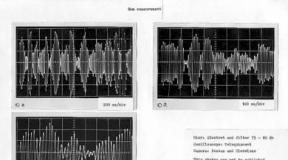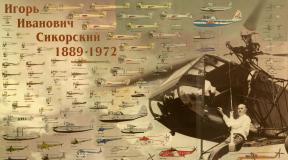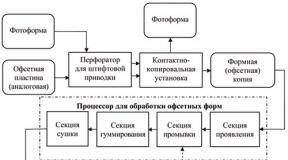Valentin halts under the bridge. “Plane under the bridge”: anniversary of Siberian aviation hooliganism. Flying under a bridge in a jet fighter

In June 1965, a pilot from the air defense regiment Valentin Privalov flew a MiG-17 under the Communal Bridge over the Ob River in Novosibirsk...
Before this, he himself swam to examine the distance between the bridge supports. Moreover, Chkalov made a similar flight on a propeller-driven plane, not a jet...
He was arrested for air hooliganism, but Malinovsky, the then Minister of Defense, ordered the pilot to be allowed to fly
I heard about this incident in childhood, but never saw a photo, so I found it on Facebook, searched for it, and found more:
The arrest followed immediately - the very next day. The debriefing of the flight and, to put it mildly, the demolition did not take long. However, no one wanted to take upon themselves the final decision on the fate of the pilot. The then USSR Minister of Defense, Marshal R. Malinovsky, put an end to this matter. A telegram came from him to the unit: “Pilot Privalov should not be punished. Limit yourself to the events that were carried out with him. If you weren't on vacation, send him on vacation. If there was, give ten days of rest with the unit.” "Captain Valentin Privalov, nicknamed "Jack".
Valentin was born in the Moscow region, his childhood fell during wartime. While still at school I was involved in a flying club. After college, he served in naval aviation, in Kaliningrad and the Arctic, and was awarded the Order of the Red Star. Later he was transferred to Kansk, Krasnoyarsk Territory.
In June 1965, as part of a flight of 4 MiGs, Privalov was seconded to exercises taking place in the Siberian Military District - at a training ground near Yurga, anti-aircraft divisions conducted firing training. Returning from a mission to Tolmachevo, Valentin flew under the Communal Bridge. (For reference: the size of the arch is approximately 30 by 120 meters, the wingspan of the MiG-17 is 9.6 meters).
Anatoly Maksimovich Rybyakov, retired aviation major, recalls:
“From the third turn, he descended and passed under the bridge. Speed is about 400 km/h. It was a clear, sunny day. People on the beach were swimming, sunbathing, and suddenly there was a roar, and the plane took off like a candle, avoiding a collision with the railway bridge. It was clear that this could not be hidden. Air Marshal Savitsky arrived and conducted an investigation. They asked Privalov what his motives were. He replied that he wrote two reports about being sent to Vietnam, but they remained unanswered. That’s why I decided to fly under the bridge so that people would pay attention. This act was assessed differently. Young pilots are like heroism, the older generation is like air hooliganism.”
Meanwhile, there is a history of flights under bridges: “According to a widely circulated legend, Chkalov flew under the Trinity Bridge in Leningrad. For the film “Valery Chkalov” this flight was repeated by pilot Evgeny Borisenko!
Rumors about flying under the bridge quickly spread across the country, and following Valery Pavlovich during the armed conflict on the Chinese Eastern Railway (CER) in 1929, pilot E. Lukht, three times awarded the Order of the Red Banner, personal military weapons, gold watches and other insignia of those years, flew under the bridge over the Amur in Khabarovsk, followed by this seemingly useless and most dangerous trick, repeated by the pilot of the same air squad A. Svyatogorov, as well as I.P. Mazuruk and M.V. Vodopyanov.
During the war, a similar trick was performed by the pilot Rozhnov. Escaping pursuit in the sky, he flew under a railway bridge, saving the lives of himself and the crew.
In fact, the task that Valentin Privalov set for himself was extremely difficult. The speed of the fighter on the approach to the bridge was 700 km per hour, and it was necessary to hit the target of the bridge arch 30 meters high and 120 meters wide. One wrong movement of the helm - and the mistake will be fatal. And people walk along the bridge, trucks and buses drive, the embankment is full of people.
Moreover, from the Communal Bridge to Zheleznodorozhny is only 950 meters, or 5 seconds of flight. To avoid a collision with it, it is necessary to go upward with a “candle”, withstanding the heaviest overloads.
An additional difficulty was the fact that the flight took place over the water surface, but it was precisely this circumstance that bothered Privalov the least. After all, he started in naval aviation and knew the intricacies of flying over the surface of the water perfectly.
Valentin Privalov himself said that he was absolutely confident in himself, in his training and in his combat vehicle. He only noticed an unexpected effect - according to all the laws of physics, the “window” of the bridge through which the pilot had to fly should have increased as he approached the target, but, on the contrary, it visually decreased.
Nevertheless, the MiG-17 confidently swept under the bridge, immediately rushed upward, after which it again headed for the airfield.
Union-scale emergency
Valentin Privalov recalled that everything went so quickly, easily and smoothly that he even believed that no one noticed his maneuver.
The next day, the pilots arrived at the division headquarters, where, at first glance, everything was quiet and calm. In fact, Privalov’s three colleagues did not even know that there was cause for concern. In fact, an unprecedented scandal was raging in the military authorities. The military who witnessed Privalov's flight reported to the command, which immediately assembled a special commission to investigate the emergency. In Novosibirsk there were incredible rumors about what had happened - they said that the pilot flew under the bridge on a bet, others said that in this way he decided to win the heart of his beloved who was standing on the bridge.
The emergency was reported to the very top, personally to the USSR Minister of Defense, Marshal Rodion Malinovsky.
All four pilots were arrested just in case, and Privalov was preparing to be expelled from the party and put on trial.
Meanwhile, there were also those who came to Privalov’s defense, - the first secretary of the Novosibirsk regional party committee, Goryachev, supported the pilot. The fact is that in Novosibirsk there was an aircraft factory where Su aircraft were built, and the head of the regional committee, for whom aircraft production was one of the most important matters, valued cool pilots, desperate daredevils.
Reprimand for “Chkalovism” at the Chkalov plant
Privalov was taken “on the carpet” to Air Marshal Evgeny Savitsky, an outstanding ace and twice Hero of the Soviet Union, who was in Novosibirsk. Savitsky, the father of cosmonaut Svetlana Savitskaya, piloted the most modern military aircraft until his 70th birthday and also appreciated great pilots. But as a boss, he could not condone aviation hooliganism, so he gave Privalov a noble beating for “Chkalovism” using all the wealth of the great and mighty Russian language.
A piquant moment - the demolition took place at the Novosibirsk aircraft plant, which was named after... Valery Chkalov.
When Savitsky finished, the officers accompanying the marshal whispered to Privalov: there will be no reprisals, he will be left in the air force.
After this, Privalov was ordered, leaving the plane and taking a parachute with him, to depart by train from Novosibirsk to his permanent duty station in Kansk.
Minister's "verdict"
A week after returning to Kansk, a telegram arrived from Moscow containing the “sentence” passed by Defense Minister Rodion Malinovsky: “Pilot Privalov should not be punished. Limit yourself to the events that were carried out with him. If you weren’t on vacation, send him on vacation; if you were, give him 10 days of rest with your unit.”
As a result, Valentin Privalov suffered the most serious punishment along the party line - a severe reprimand entered into his registration card. And the regiment commander and the head of the political department were punished by service, and they were reprimanded.
Pilot Valentin Privalov continued his service in aviation, rising to the rank of lieutenant colonel and the position of deputy regiment commander. Perhaps he would have risen to the rank of general, but at the age of 42 his health failed - he was suspended from flying due to cardiovascular disease. It was possible to remain in the army in a position not related to flying, but the born pilot chose to resign.
For another quarter of a century, Valentin Privalov worked in the civil aviation dispatch service, where he was awarded the honorary badge “Excellence in Air Transport.”
In 1965, there were no mobile phones or video cameras, so no one captured Valentin Privalov’s incredible flight. It exists on the Internet only in the form of photo collages.
Over the past half century, no one in the world has managed to repeat what the Soviet pilot did. Maybe this is for the best. To do what Valentin Privalov did, it is not enough to be a good pilot, you need to be born to fly.
AND Ace pilot Valentin Privalov
Memories of an old man
Valery Chkalov flew under the Trinity Bridge in St. Petersburg on a Fokker D.XI fighter, the motivation for the action was a woman. Whether this is so is not known for certain. On topic:
___
It is known for certain that in 1941, on the set of Mikhail Kalatozov’s film “Valery Chkalov,” pilot Evgeniy Borisenko had to repeat this trick six times to get the picture the filmmakers wanted. He performed it on the Sh-2 amphibious aircraft, the wingspan of which is larger than that of Chkalov’s fighter, so the flight was more difficult to make than for the hero himself. During the war, Hero of the Soviet Union pilot Nikolai Andreevich Rozhnov, after serving as an attack aircraft on the front line, began to return home, five Me-109s landed on his tail, he shot down one, moving away from the others, flew at low level under a railway bridge, left, fought until victory. The Pravda newspaper published an article about him: “The feat of pilot Rozhnov.” He was inspired to this maneuver by Chkalov’s daring trick.
An eyewitness account: “And so, when we were somewhere in the middle of the bridge, something happened that could not be imagined in the most terrible dream. Suddenly, a silvery silhouette of an airplane flashed from under the bridge and immediately soared into the sky at a large angle to the horizon, baring the bottom of the river for a second! A wave hit the beach, washing the clothes and shoes of the careless swimmers into the water. The man walking ahead of me and I stopped and, spellbound, looked at the stunning action, and the corporal pressed his cap tightly to his head with both hands, fearing the loss of his breech. property. A little later we smelled kerosene.
By evening, almost the entire Left Bank region knew about what had happened, although there was a “broken phone effect.” Instead of the MiG-17 fighter, the passenger Tu-104 was already featured. They said that a plane from the plant flew under the bridge. Chkalov, who allegedly lost control during testing."
The flight accident had a wide resonance not only in the USSR, but also abroad. After this flight, the pilot was arrested, they wanted to put him on trial for air hooliganism, but the USSR Minister of Defense R. Ya. Malinovsky ordered V. Privalov to be allowed to fly again. Subsequently, Valentin Privalov continued to serve in the legendary squadron of aces in Kubinka near Moscow.
Valentin Privalov
Thirty-year-old captain Privalov committed this act not on a dare or because of a woman. The reason was different. He wanted to show that there are still pilots with a capital “P” in the Armed Forces, that the ill-conceived dashing “cutting” of his native army during the Khrushchev Thaw did not eradicate Chkalov’s traditions and pilot’s daring. In addition, it was also a kind of protest against the lackey’s suppression of innovation, initiative and the “wiping out” of combat pilots.
But a dashing act for the sake of a woman - I also understand that.
_______
By the way, is the photo real? Of course not, here and here
On June 3 (according to some sources - June 4), 1965, the whole of Novosibirsk was excited by an extraordinary incident. The townspeople shared the news with each other: the city repeated a trick that Valery Chkalov performed in Leningrad 30 years ago (either in 1927 or 1928), namely: flying under one of the city bridges!
Whether this (flying a fighter plane under the Trinity Bridge) was actually carried out by Chkalov or not - history, frankly speaking, is silent. We know about this only from the film “Valery Chkalov”, but in Novosibirsk it was a real action. Moreover, this was done on the wrong antediluvian fighter I-5(1) , which Chkalov flew in his years, and on a fairly modern machine for that time, especially a jet one: the MiG-17 fighter. And this was done by military pilot Valentin Privalov.

On that day, many saw how a red-star silver combat aircraft at great speed descended to the water surface of the Ob River so low that the waves diverged behind it like behind a boat, and in this position flew exactly into the target of the central arch (30 by 120 meters) of the Communal Bridge. There were only a few seconds left until the next bridge, along which a freight train was just passing, but the fighter managed to take off like a candle and disappeared into the clouds without a trace. The deafened and numb witnesses to the fantastic spectacle on both sides of the Ob began to applaud in unison...
MiG-17 fighters; Valentin Privalov flew this type of aircraft in 1965:

Communal Bridge of Novosibirsk
As it later turned out, it was a MiG sent to Novosibirsk by Air Force captain-sniper pilot Valentin Privalov. Then he was 30 years old, and he had a reputation as a recognized ace, although his colleagues ironically called him Knave among themselves.


Valentin was born in the Moscow region, his childhood fell during wartime. While still at school I was involved in a flying club. After college, he served in naval aviation, in Kaliningrad and the Arctic, and was awarded the Order of the Red Star. Later he was transferred to Kansk, Krasnoyarsk Territory. In June 1965, as part of a flight of 4 MiGs, Privalov was seconded to exercises taking place in the Siberian Military District - anti-aircraft divisions were conducting firing training at a training ground near Yurga. Returning from a mission to Tolmachevo, Valentin flew under the Communal Bridge. (For reference: the size of the arch is approximately 30 by 120 meters, the wingspan of the MiG-17 is 9.6 meters).
A MiG-17 flying under the Communal Bridge; according to one version, the picture was taken by a foreign photojournalist who happened to be in the right place at the right time...

Remembers Anatoly Maksimovich Rybyakov, retired aviation major:
“From the third turn, he descended and passed under the bridge. Speed is about 400 km/h. It was a clear, sunny day. People on the beach were swimming, sunbathing, and suddenly there was a roar, and the plane took off like a candle, avoiding a collision with the railway bridge. It was clear that this could not be hidden. Air Marshal Savitsky arrived and conducted an investigation. They asked Privalov what his motives were. He replied that he wrote two reports about being sent to Vietnam, but they remained unanswered. That’s why I decided to fly under the bridge so that people would pay attention. This act was assessed differently. Young pilots are like heroism, the older generation is like air hooliganism.”
Privalov could have been severely punished, even going to court, but he was still pardoned. It is known that the Minister of Defense of the USSR, Marshal Malinovsky, personally took part in his fate, and sent a telegram with approximately the following content:
“Pilot Privalov should not be punished. Limit yourself to the events that were carried out with him. If you weren't on vacation, send him on vacation. If there was, give ten days of rest with the unit.”
Approximately, because popular rumor stubbornly adds one more line to the telegram:
“Regiment commander to be reprimanded.”
There were also rumors that the pilot was saved from punishment by a call to Moscow from the first secretary of the Novosibirsk Regional Committee of the CPSU Goryachev, who was on good terms with L.I. Brezhnev.
And although Privalov was never sent to Vietnam, his subsequent career was generally successful. He was transferred to the Gorky region (some sources claim that Privalov served in Kubinka), rose to the rank of lieutenant colonel, was both a squadron commander and deputy regiment commander, but in 1977, due to heart disease, he was forced to retire "citizen".
(Visited 4,029 times, 1 visits today)
The next day, June 5, 1965, a “surprise” awaited all four pilots seconded from Kansk. According to a number of orders and instructions, the emergency incident was reported vertically, and soon everyone who was assigned to their position learned about an incident unprecedented since the time of Valery Chkalov. They also reported to the Minister of Defense of the USSR, Marshal of the Soviet Union R.Ya. Malinovsky.
Anticipating numerous thunder and lightning from the General Staff Olympus and the imminent prospect of Privalov being put on trial, the communists of the regiment hastily expelled the desperate pilot from the ranks of the CPSU. And in those years this meant the end of an aviation biography even in the most favorable scenario.
Privalov, without a plane, but with a parachute (as required by uniform), went by train back to Kansk. He was threatened, if not with a tribunal, then with the end of his flying career. However, when the ace arrived at his native unit, a telegram arrived there: “Pilot Privalov should not be punished. Limit yourself to the activities that were carried out with him (meaning an educational conversation with the marshal. - Ed.). If you weren't on vacation, send him on vacation. If there was, give ten days of rest during the unit. USSR Minister of Defense Marshal R. Malinovsky.”
Apparently, the suicidal courage of the air hooligan conquered the marshal, who was familiar with both Chkalov and Pokryshkin. Who, by the way, were also not against demonstrating their aerial skills. And rightly so. Well, hide it, or what?
Now it is difficult to say why the Minister of Defense made an unexpected decision regarding Privalov. Maybe the marshal realized that such pilots in case of war would be very useful to their native aviation, or maybe something else happened, but Captain Privalov was ordered not to be punished, but to be sent on leave, and if he already had one, then to be given a ten-day rest at parts! After this, the ex-communist was quickly returned to the ranks of Lenin’s party, and the caliber of stars on the desperate pilot’s shoulder straps soon changed. He became a squadron commander and even a deputy regiment commander, but not immediately.
They didn’t forget about Chkalov’s follower in the capital either - in the early 70s, Major and then Lieutenant Colonel Privalov continued to serve in the training air regiment in the village of Savasleika, Gorky Region. Soon the training regiment became the 148th center for combat use and retraining of air defense aviation flight personnel. Only in 1977, cardiovascular disease forced Valentin Vasilyevich to leave flight service. He could not and did not want to remain in the ranks of the army without his favorite job - he had to resign, although there was an option to serve for some time in a rear position. In the late 80s, he underwent surgery to implant a cardiac pacemaker. Currently, Valentin Vasilyevich Privalov lives in Moscow.
Read also...
- Version: the basis of the authentic teachings of Christ is the Vedic tradition
- Ancient faith of the Slavs Slavic faith before Christianity
- "Plane under the bridge": anniversary of Siberian aviation hooliganism
- Atrocities of fascism: murders of children, fascist child killers - history in photographs - LiveJournal Russians killed the children of fascists
